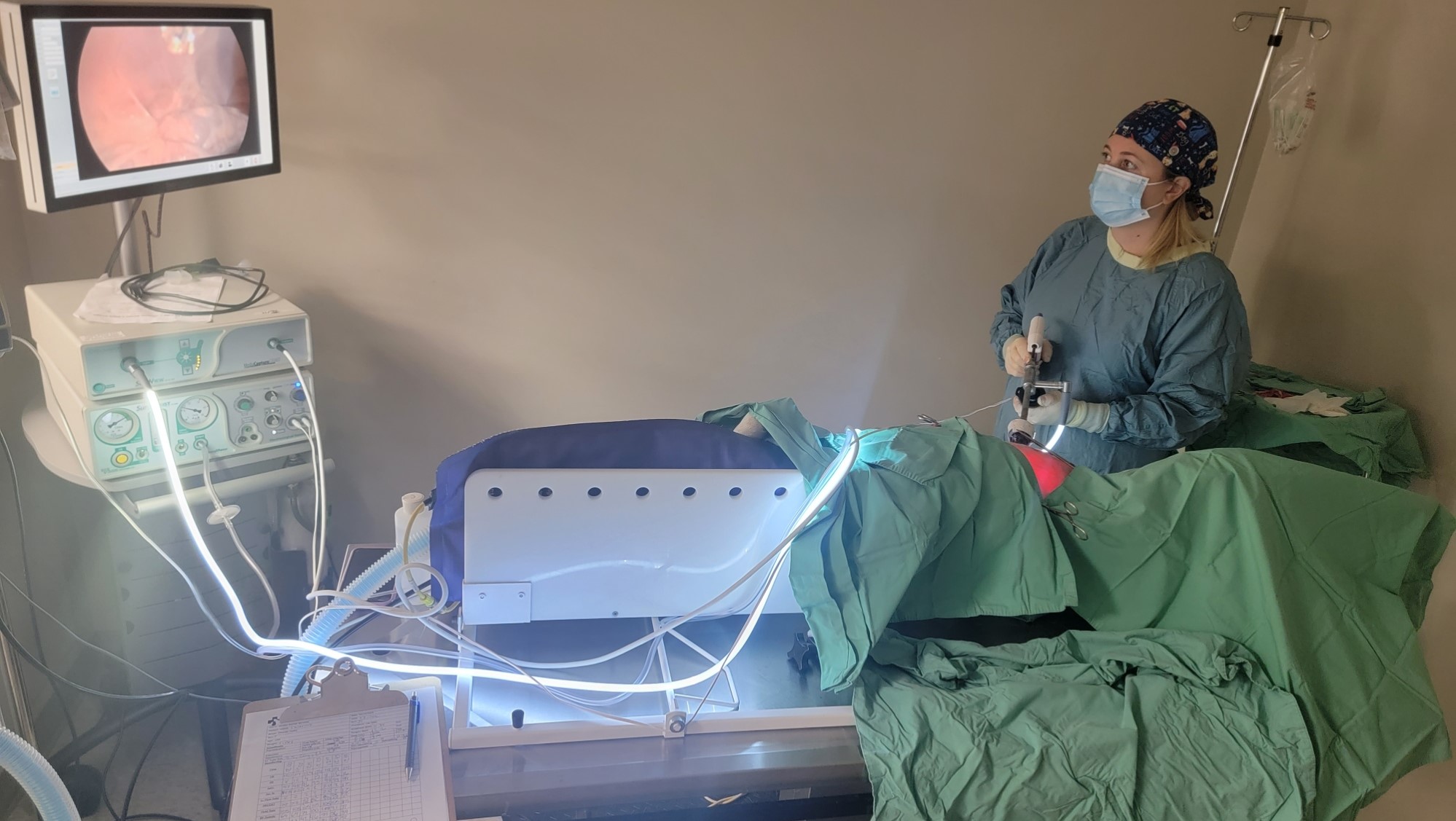Laparoscopic spay procedure

Rossland animal hospital is pleased to be one of the few hospitals in the Oshawa and Whitby areas that offer the laparoscopic spay procedure.
Laparoscopic is a way of performing abdominal surgery with camera visualization through 1 or 2 small incisions in the abdominal wall. This avoids the larger incisions required to access the abdomen, resulting in numerous benefits for the patient and owner. For this procedure we do an ovariectomy which means only the ovaries are removed.
Why should I consider a laparoscopic procedure for my pet?
Laparoscopy provides numerous benefits over open abdominal surgery. In human medicine they will almost always perform a laparoscopic procedure over open abdominal surgery when possible.
1. Less exposure = lower risk of infection
2. Cautery of all vessels provides a much more efficient and stable seal of blood vessels versus traditional ligatures tied around these vessels.
3. The scope provides magnification of the anatomy to improve visualization of important structures.
4. Smaller incision(s) do not need to have the skin sutures no exposed sutures and no e-collar required (except in rare instances).
5. Recovery does not require weeks of exercise restriction. Typically, 1 day of leash walks only, then back to full, normal activity.
6. Reduced discomfort for your pet
7. If you have a pet in heat, it can be performed much sooner than a traditional spay.
8. A full abdominal scan is performed on your pet by visualizing all organs of the abdomen at the time of the procedure. This can help to identify any abnormalities early and allow for biopsies if indicated.
9. For giant breeds, it can be coupled with a minimally invasive gastropexy to help reduce the risk of gastric torsion (bloat).
What are the advantages of this procedure over the traditional spay?
1. Reduced discomfort post-operatively
2. No e-collar post-operatively
3. Minimal exercise restrictions post-operatively; quicker recovery
4. Safer/more efficient seal of blood vessels and less risk of intraoperative and post-operative bleeding
5. Less invasive and Lower risk of infection if performed appropriately

